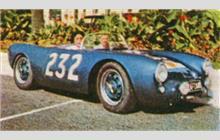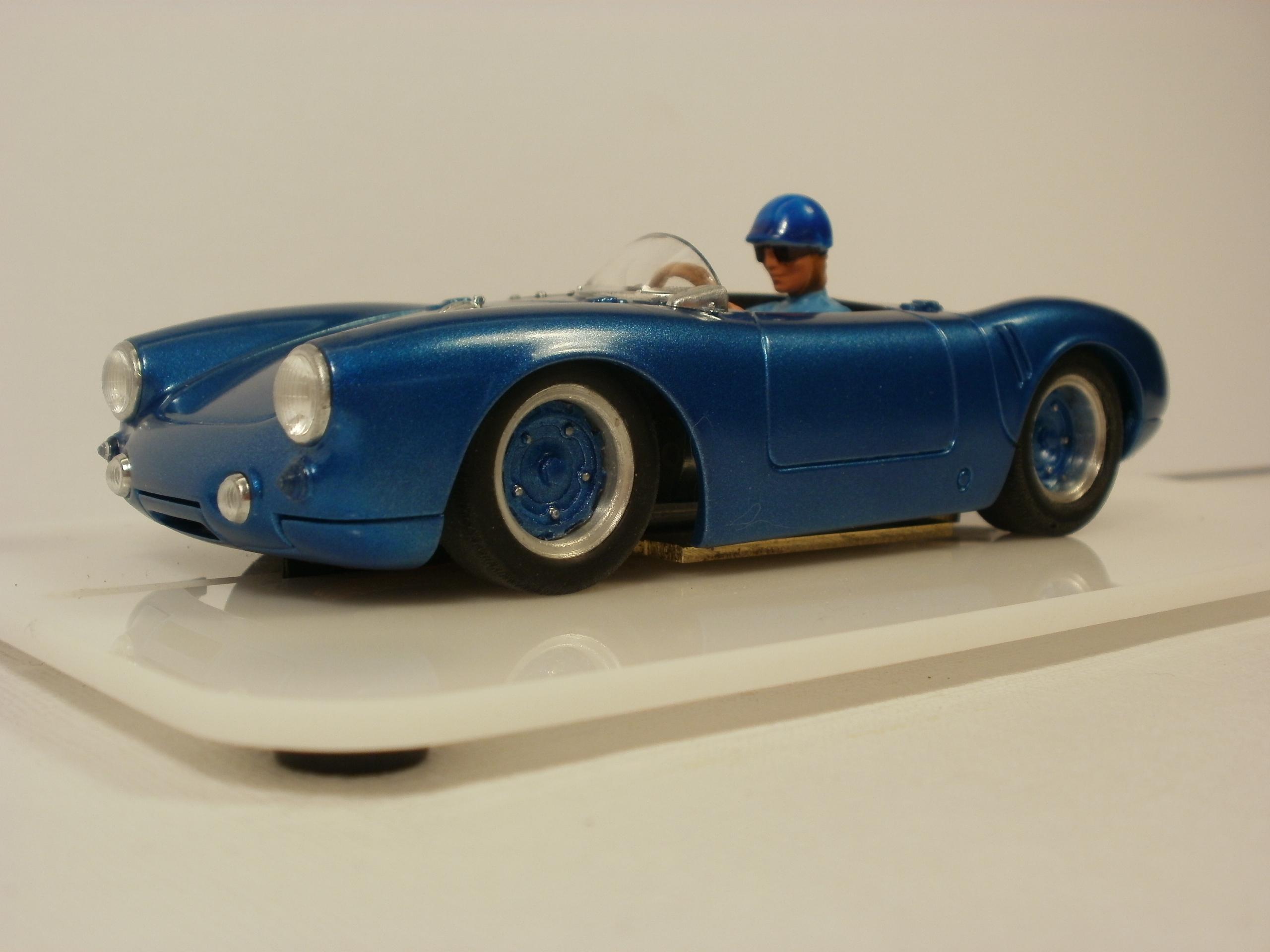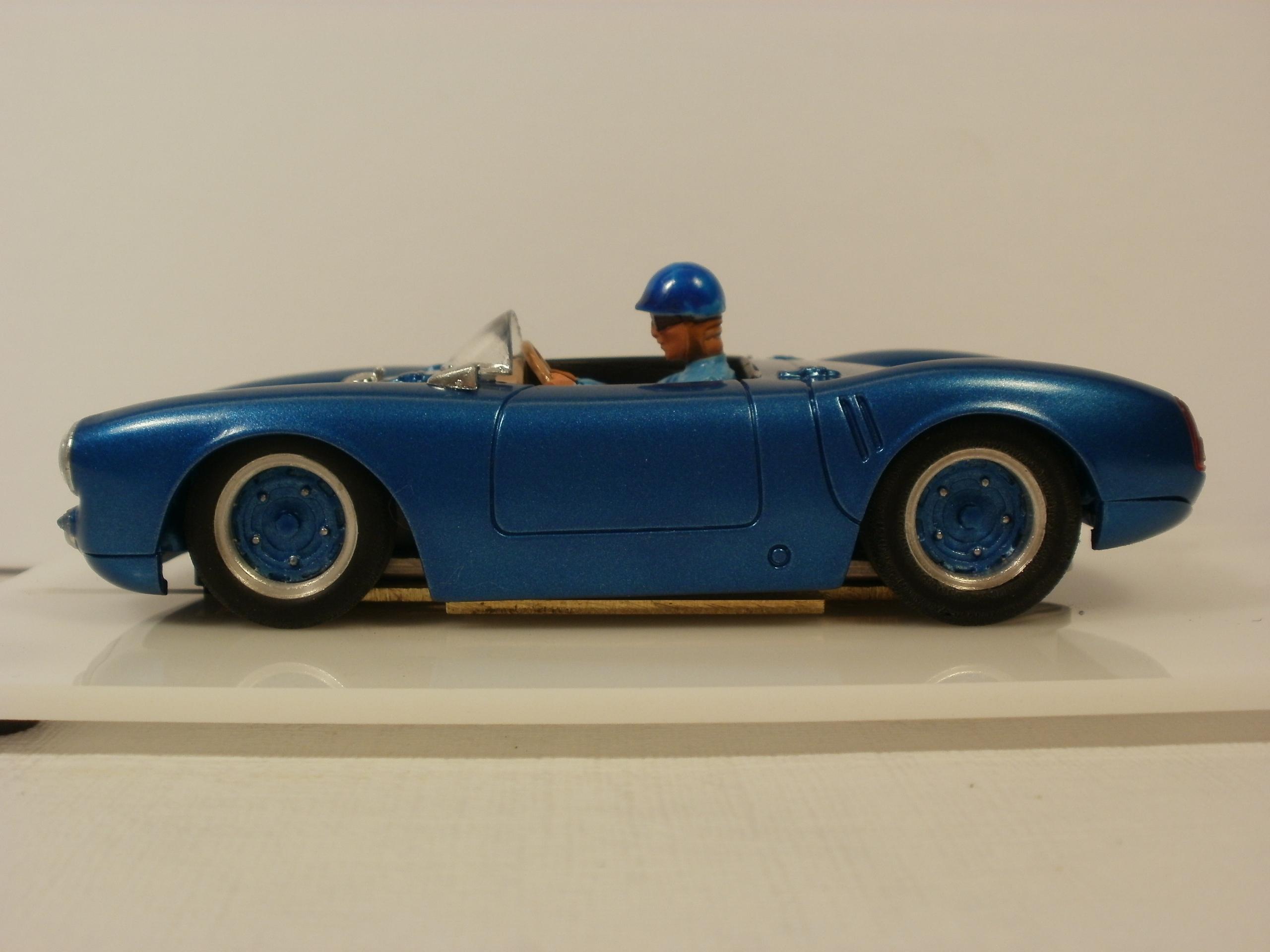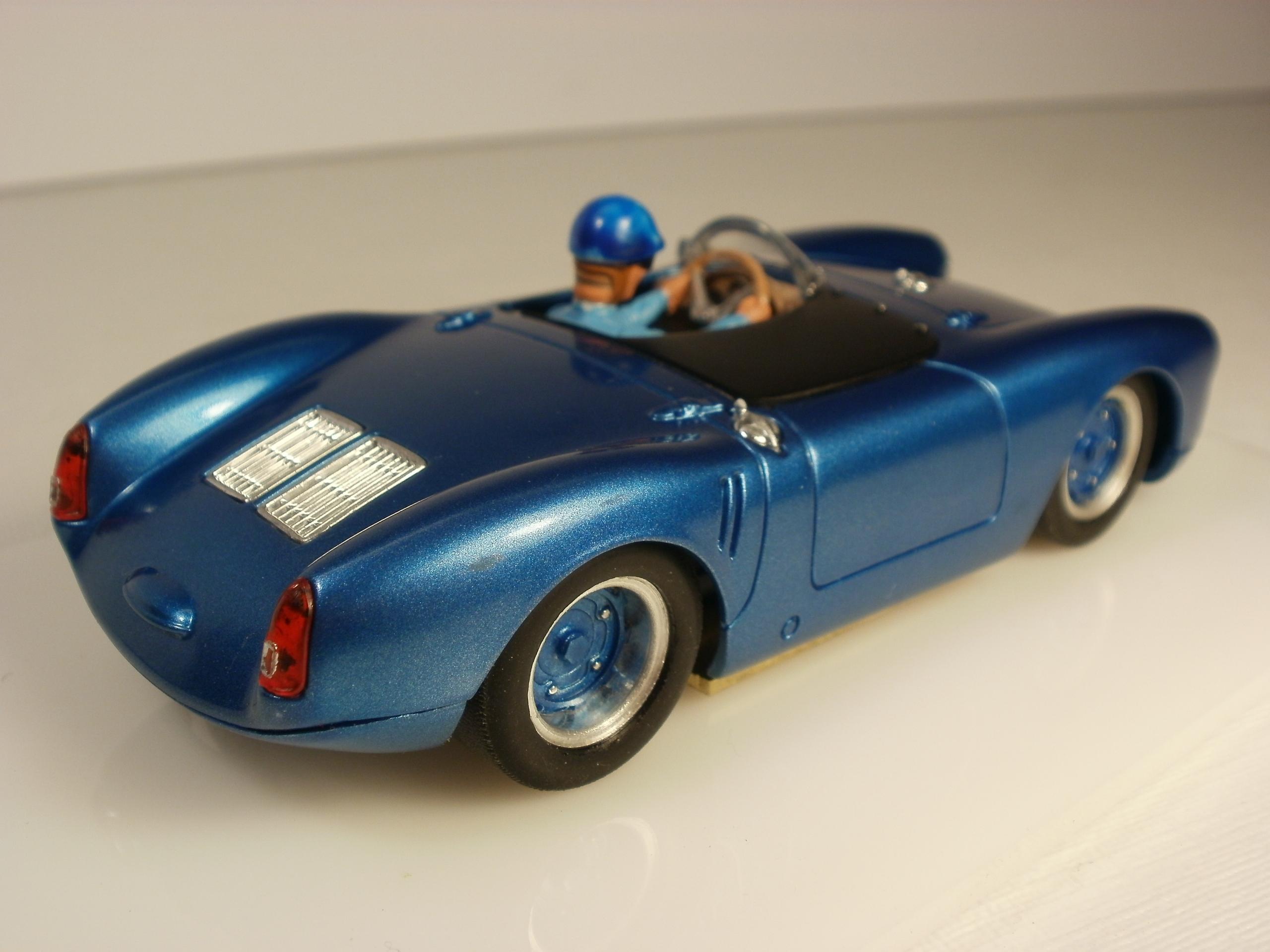My original inspiration for this build was the Carrera Panamericana. That created a need to research the 550 Spyder in great detail. There were 15 prototypes created by Porsche before the car offically went into production.
Every prototype went through many changes. Full colour changes. Fog lamps or turn signals were either added or deleted. Front air scoops were cut out of the front end. Etc…
The first few 550’s could be converted from a coupe, spyder, or high-back spyder with a few bolt-on body parts. As each model was built. New things were added such as the one-piece rear bonnet that exposes the entire engine-bay by opening 2-straps.
The D’Art Porsche 550 Spyder slot car kit is simular to serial number 550-13. It would simply not be profitable to make all the variations of prototypes.
That being said. I found record of a Porsche 550 that raced in the 1953 Carrera Panamericana without a specific photo. It’s a sister car to Art’s blue 550. RacingSportsCars had a photo of an early Porsche 550 that was also blue in colour. With that information I started the build. Here is a photo of the car.

Here’s what I created with the D’Art Porsche 550 Spyder body kit.



The car still needs the leather straps painted (helmet repainted), numbers installed, licence plate printed, livery decals, etc… This will be my interpretation of the Porsche 550 Spyder #159 driven by Karl Kling of Germany that raced in 1953. The colour detail only indicated that the car was “light”. This is Tamiya “light metallic blue”. Anything but silver… please!
This D’Art Porsche 550 Spyder has a Slot-It 22.5k flat-6R and weighs 104.1-grams. It’s a little German tank that goes very fast!